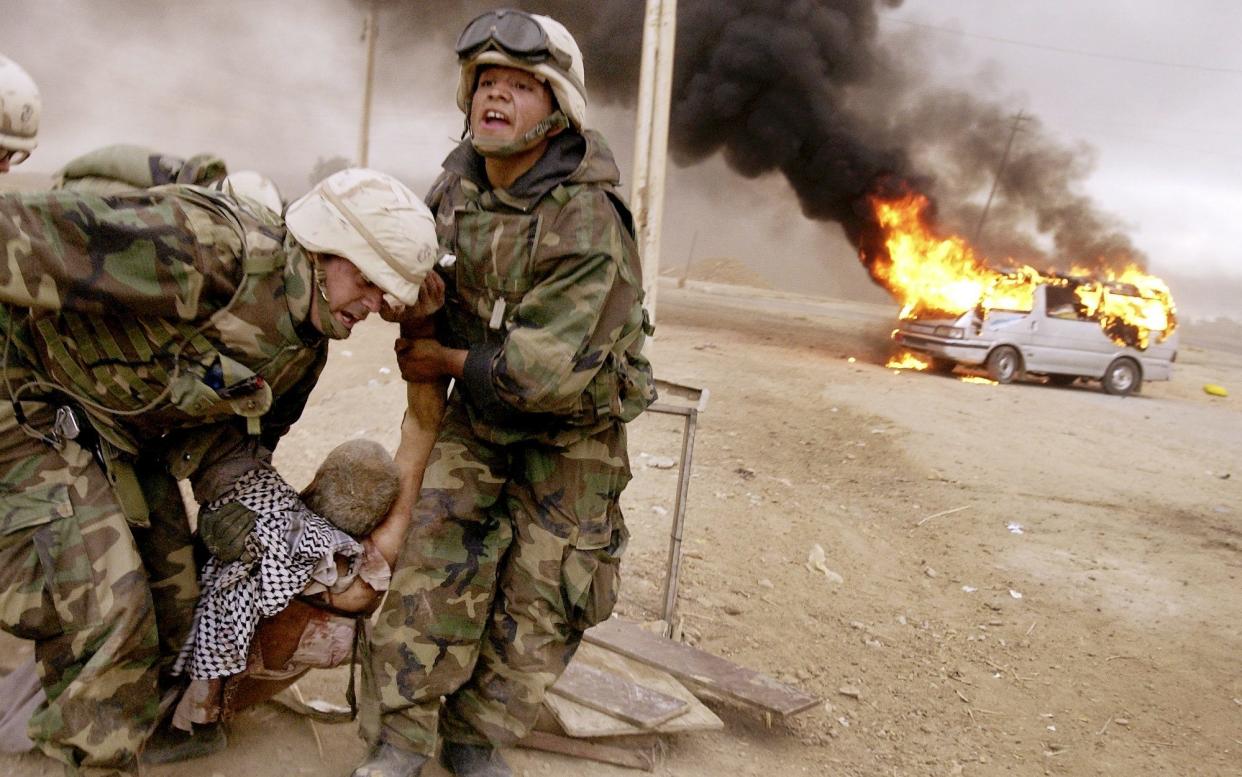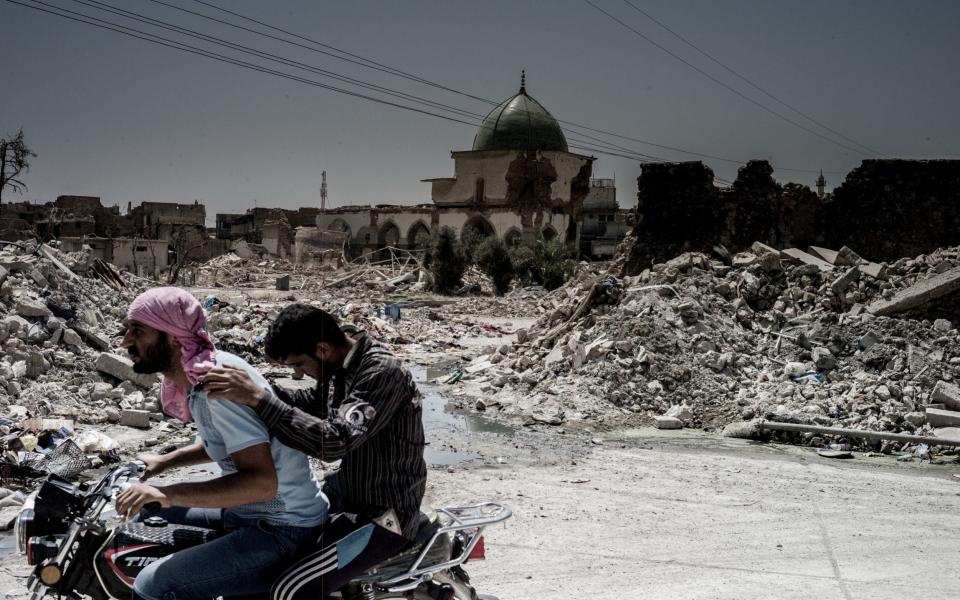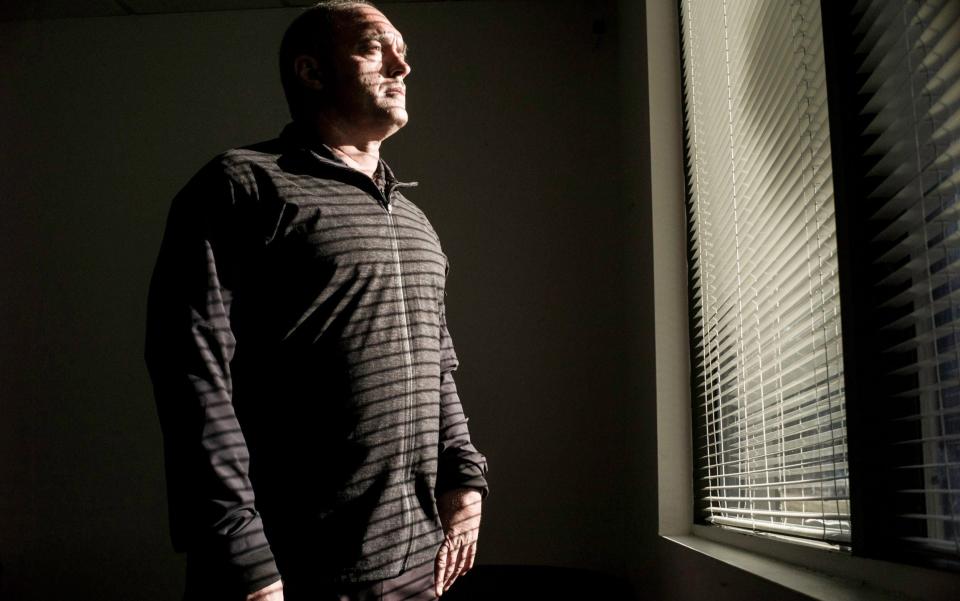‘I hope viewers will reflect on the fact that the invasion of Iraq was utterly pointless’

My interviewee was close to tears. A tough former United States army officer, once lauded for the lethal effectiveness of his operations against Iraqi insurgents, he was finding it difficult to get his words out. He said his sole reason for talking to me was to persuade people who would watch my film to think twice about the wisdom of military intervention. “War as an institution is pure evil,” he told me. “It’s pure evil.”
I had first visited Iraq in 2016 to meet Yazidi refugees fleeing Islamic State, the terrorist group which, at that time, controlled Mosul in the north of the country. I was filming a series of documentaries about the journeys of various refugees from their country of origin to their final destination.
Exodus took four years to make and was a success, but when it was finished, I couldn’t get Iraq out of my mind. Having spent a lot of time with my subjects, I felt very connected to their situation. It wasn’t just the plight of the Yazidis I was concerned about, it was the state of the whole country.
As with any situation, there are causes and effects going back a long way, but it seemed to me that the toppling of Saddam Hussein, the Iraqi dictator, in 2003 was as good a place as any to start. The falling of that domino led to the destabilisation of the region, and that led to refugees arriving in Europe and that, in turn, was one of the factors in the rise of far-Right nationalism.
I’d hear those same far-Right nationalists blaming the refugees themselves for their own plight. “It’s their fault – nothing to do with us.” I found it infuriating; the equivalent of burning down someone’s house and then blaming them for living on the street.
I see the 2003 invasion of Iraq and the subsequent occupation and civil war as the origin story for so much that is still affecting our lives. Hideously ironic, isn’t it, that George W Bush and Tony Blair’s pre-emptive strike to nip a supposed terrorist threat in the bud should have led directly to the creation of Isil?
I didn’t want to make a regular documentary where I interviewed politicians, decision makers and the key players. I wanted to tell the story through the eyes of those whose lives were impacted and altered by those political decisions.
Miriam Walsh, our amazing archive producer, somehow dredged up around 13,000 film clips amounting to 800 hours of footage from 2003 and 2004 showing all kinds of stuff: street scenes, interviews, army activity, the aftermath of insurgent attacks, actual attacks. Much of it had never been seen before. And through the network of contacts I already had in Iraq, we were able to find some of the people featured in this archive and get some astonishing interviews.

So I was able to tell the story through people such as Alaa Adel. She was just 12 in the summer of 2003 and was on her way back from school when an insurgent fired an RPG at a passing American vehicle. Five children were killed in the blast. Incredibly, Alaa survived, but shrapnel ripped through her face, shredding an eye. No Americans were injured. Just a bunch of Iraqi kids.
I also met Nidhal Abed of Fallujah, who was too poor to leave the city that became such a hellish cauldron of carnage and death. One evening in November 2004 she was carrying her baby son Mustafa in the street. There was a huge explosion. “The next thing I know, Mustafa is next to me with his guts in the dirt,” Nidhal told me. At the hospital, the doctors told her they could do nothing for him.
I also spoke to American soldiers such as Lt Col Nate Sassaman, a thoughtful, reflective man. And a troubled one. The story of his year-long tour in Iraq is like the story of the whole country embodied in one person. Sassaman was one of the good guys: the son of a Methodist minister, a star quarterback and, at first, an exemplary American officer.
He arrived in Iraq with the noble aims of improving the lives of ordinary Iraqis and of helping reconstruct the country. He was stationed north of Baghdad in the city of Balad and placed in charge of a province. He set about meeting locals and building bridges, classic “winning hearts and minds” stuff. His troops loved him and the Iraqis were impressed by him.
But, after the collapse of Saddam’s regime, the American authorities decided to remove all members of the dictator’s Ba’ath party from public sector jobs, even though they didn’t have anybody to replace them with. And then they dissolved the Iraqi military, meaning that 400,000 men trained to use weapons were out of work and at a loose end. Things started going seriously south.

“We set up the perfect conditions … for an insurgency,” Sassaman says. Sure enough, one started in July and soon Sassaman’s battalion was coming under attack seven or eight times a day from small arms, mortars and improvised explosive devices. Yet, as the country disintegrated, every day sinking further into Apocalypse Now-style craziness, the US authorities continued to insist that things were getting better. Even as attacks on his forces spiked, Sassaman set up democratic elections for the Balad town council. Iraqi men and women walked for miles proudly to take part in the democratic process previously denied to them.
But Sassaman’s efforts to implement peaceful democracy were being outpaced by the insurgency. And the soldier’s patience eventually ran out. If anyone shot at his soldiers, he went to “extraordinary lengths” to ensure that “that was going to be their last day on the face of the earth,” he told me. By his own admission, he went over to “the dark side”. An Iraqi farmer on Sassaman’s patch puts it another way: “He lost his mind.”
Sassaman had houses bombed. He cordoned off an entire village with barbed wire, forbidding anyone to leave or enter. He ordered nightly raids, the brutality of which are still remembered by the locals. And also by Sassaman himself. “As I sit here now 16 years later, I’m still trapped commanding my battalion in Iraq and I can’t get out of it,” he told me. “It’s not a physical fight, it’s a mental fight now.”
He left the military in 2005 after being reprimanded over an incident in which some of his troops forced two Iraqis to jump into the Tigris.

He recalls that, when he came home to the US, “I didn’t do good with the reintegration”. There was an occasion when he was driving and another driver made an obscene gesture at him. “I swear to God,” he says. “If I’d had my 9mm, I would have blown his brains out right there. It would have taken me two seconds. I was out of control. I’ll never fire a weapon again, ever.”
It was Sassaman who told me: “War as an institution is pure evil.”
I hope he and the other interviewees in Once Upon a Time in Iraq give viewers pause for thought. I hope they will reflect on the fact that the invasion – the “liberation” as it was called at first – and the utter, nightmarish chaos that followed it still reverberate around the world today.
And that it was utterly pointless.
Alaa Adel, the interviewee who suffered life-changing injuries as a little girl says, simply: “The war was a catastrophe. “We all became afraid and we still live in fear. We were scared of everything, even to dream.”
Once Upon a Time in Iraq begins on BBC Two at 9pm on July 13


